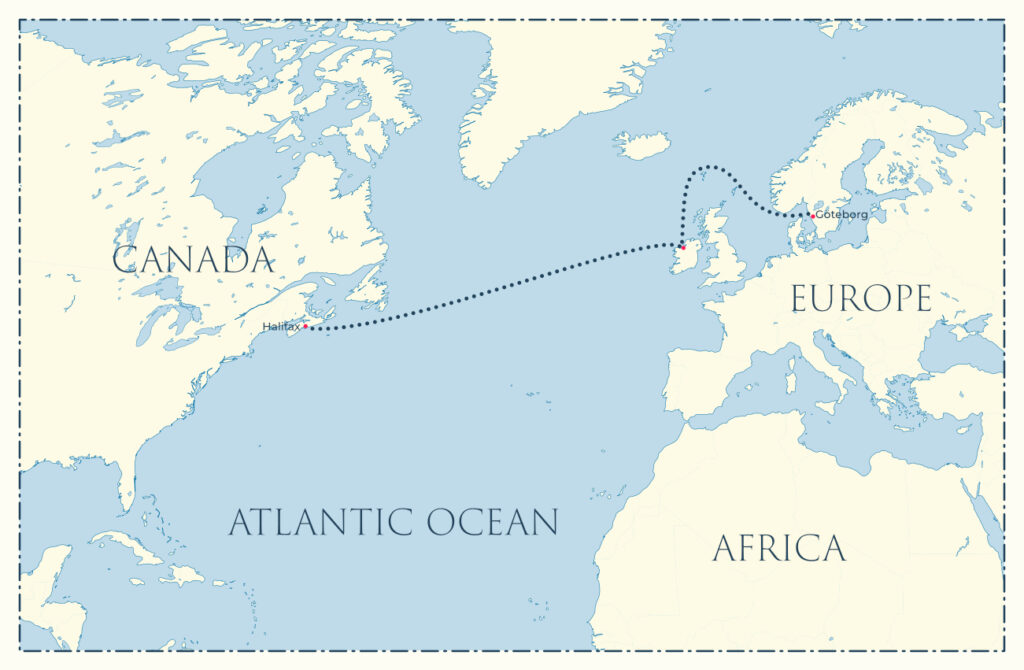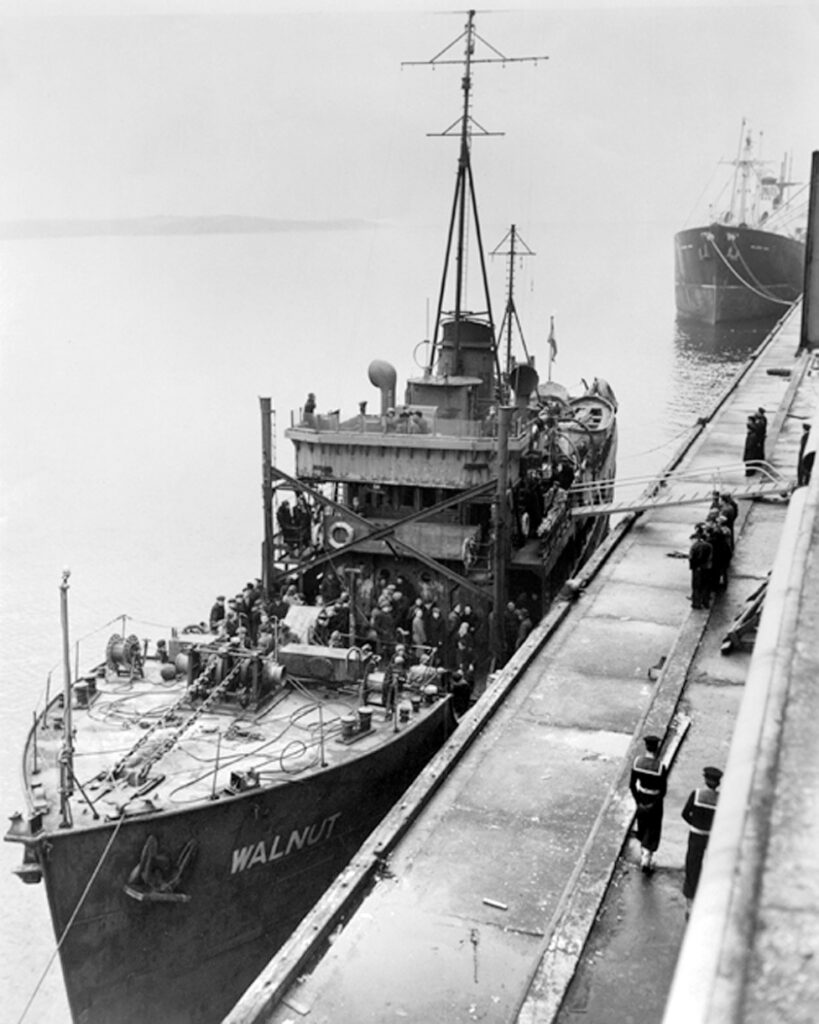Boats

Skepp som seglade till Kanada kunde ta ett antal olika rutter, bland annat genom Kaledoniska kanalen i Skottland, med stopp i Spanien och Madeira. Kartan ovan visar S.S. Walnuts ungefärliga rutt.
Resor till Kanada
Efter andra världskriget, som svar på växande rädslor att baltiska flyktingar i Sverige skulle utlämnas till Sovjetunion, började ester och letter att i hemlighet forma det som forskaren Juta Kõvamees Kitching kallar för de “tysta rederierna.” Flyktingar la ihop sina sparpengar, köpte gamla båtar, hittade kaptener och började i tysthet att förbereda sin flykt. Pressen kallade dem för ”vikingabåtar” men många av båtarna följde istället samma rutt som Christopher Columbus tagit, och drog nytta av passadvindar för att korsa den stora Atlanten och nå Nordamerika.
Elva vikingaskepp anlände till Kanadas östra kust mellan 1948 och 1950. Passagerarna ombord Edith och Parita la till i USA, men nekades inresa, och den kanadensiska lutherska kyrkan sponsrade till slut så att de kunde komma till Kanada. Den farliga och icke-sjödugliga Victory tog sig bara till Irland, men majoriteten av dess passagerare lyckades till slut hitta sätt att invandra till Kanada.
Skeppen varierade i storlek från fiskebåtar till minsvepare. När de första fyra anlände oanmälda i augusti 1948 rapporterade tidningarna om deras ankomst med dramatiska rubriker såsom “Farofylld sjöresa för att fly från de Röda.” Kanadensiska myndigheter behandlade passagerarna som politiska flyktingar, struntade i immigrationsrestriktioner och gav dem snabbt visum.
Den kanadensiska regeringen utfärdade sedan notiser om att framtida flyktingar inte skulle släppas in utan visum. Men en del tjänstemän var sympatiska och Hugh Keenleyside, biträdande minister för gruvor och resurser, besökte Stockholm och träffade estniska representanter. I september 1948 accepterade den kanadensiska regeringen hans rekommendation att ta emot 5000 estniska flyktingar. Men inkomstkrav och Sveriges ovilja att reta upp sovjeterna genom att öppet stödja invandringen av baltiska flyktingar orsakade förseningar, vilket fick en del att ta saken i egna händer.
I december 1948 seglade Walnut till Kanada med 347 passagerare ombord. När kanadensiska myndigheter fick reda på att båten var på väg, förberedde de sig på att internera och processa flyktingarna, och i slutändan fick nästan alla tillåtelse att stanna i landet.
Senare flyktingbåtars ankomster togs emot svalare, men majoriteten tilläts resa in i Kanada. 1950 hade ändringar i migrationspolitiken gjort det möjligt för kvalificerade baltiska flyktingar att anlända lagligt, vilket satte stopp för de osanktionerade resorna.
Mellan 1947 och 1953 bosatte sig 9159 ester i Kanada, främst från Sverige och Tyskland. De utgjorde endast 5.5 procent av det totala antalet invandrare till Kanada under perioden. Omkring 1170 flyktingar kom till Kanada ombord de så kallade “vikingabåtarna”, och ytterligare 452 hamnade först i USA och Irland men bosatte sig i slutändan i Kanada.

S.S. Walnut transporterade det största antalet passagerare (347) av de baltiska flyktingbåtar som lämnade Sverige för Kanada.
Båt / Ankomstdatum / Passagerare / Destination
- Astrid / 14 augusti 1948 / 29 /Quebec
- Atlanta / 19 augusti 1948 / 42 / Saint John
- Capry / 20 augusti 1948 / 28 / Halifax
- Österväg / 22 augusti 1948 / 75 / Halifax
- S.S. Walnut / 13 december 1948 / 347 / Halifax
- W.E. Gladstone / 16 juli 1949 / 23 / Halifax
- Brilliant / 16-23 juli 1949 / 60 / Halifax
- Pärnu / 2 augusti 1949 / 154 / Halifax
- Sarabande / 19 augusti 1949 / 258 / Halifax
- Amanda / 23 augusti 1949 / 31 / Halifax
- Göran / 12 augusti 1950 / 123 / Quebec
Totalt: 1170 passagerare
Källor: Canadian Museum of Immigration at Pier 21; Eestlased Kanadas, Canadian Estonian Historical Commission (1975); The Political Refugees: A History of the Estonians in Canada av Karl Aun (1985).
